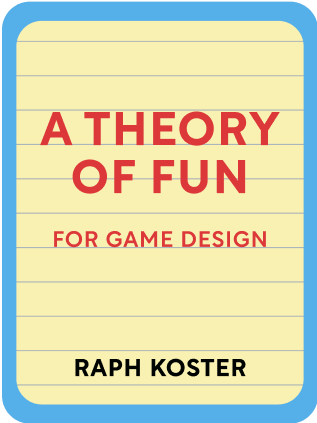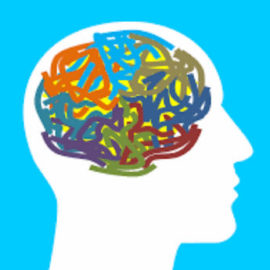

This article is an excerpt from the Shortform book guide to "A Theory of Fun for Game Design" by Raph Koster. Shortform has the world's best summaries and analyses of books you should be reading.
Like this article? Sign up for a free trial here .
What is the meaning of fun in terms of game design? How can understanding the psychology of fun help you design a better game?
Psychologically, fun is the release of dopamine you get when you learn something or complete a task. This is why Raph Koster asserts that games must include an element of learning, comprehension, and mastery to be enjoyable.
If you’re designing a game, here are some things to consider.
What Is Fun?
Most people play games to have fun. But what is the meaning of fun?
On a neurobiological level, fun is a boost of dopamine when we learn something or master a task. We are evolutionarily programmed to enjoy learning, just like we enjoy sex, because learning improved our chances of survival.
So why are games fun? Fun from games comes from learning, comprehension, and mastery.
Learning in games is different from learning in reality. Games present an environment where you can learn and have no pressure from consequence. As a result, games can be unpredictable without causing the player anxiety.
- In normal life, where there are real consequences, we like predictability. We like the legal system, pasteurized milk, and lightning rods.
- We like unpredictability only when it’s confined within an enclosure of predictability, like games on a tabletop or TV shows on a television.
Humans are natural learners. Babies instinctively play games like hide-the-object. They are learning patterns, such as how the physics of the world work (hence why they knock over cups gleefully).
But somewhere in adulthood, society starts to stigmatize games as frivolous. This is a shame, since there’s a lot that can be taught through games.
Yet even still, we continue learning from abstract models of reality. For instance, we practice speeches in front of mirrors, or we run fire drills to prepare for a real fire.
Boring Games
Boredom is the opposite of learning. The brain is constantly looking for new data to reinforce existing patterns, or new patterns to learn. When there’s nothing new to learn, boredom results.
In games, boredom can arise in these situations:
- The player understands how the game works before the game ends. This causes the game to be dismissed as trivial.
- There is depth to the game, but this is below their level of interest.
- There seem to be no patterns whatsoever. A game that is too chaotic is unenjoyable.
- The game reveals its patterns too quickly or too slowly.
- The player masters the game entirely. There is nothing new to learn.
- The player cheats and finds a more direct path to the goal. This bypasses the patterns that the game asked the player to master.
It’s ok for games to become boring. Every game is destined to become boring.
- Humans are efficient problem solvers, and they want to reach the goal as expediently as possible, by making things predictable. Sometimes this involves cheating.
Once a game gets boring and doesn’t teach anything new, it needs to encourage you to move on. Games should not exist to fulfill power fantasies.
- Power fantasies provide comfort—you can exercise mastery with little risk, and get a break from a challenging life in reality.
- The risk here is that people get false positive feedback in a static world without improving or learning anything new. Given how rapidly the world is changing, this complacency is maladaptive.
Therefore, as a game designer, you must know what your game is about, and make sure it teaches that one thing.
Why Is School Boring?
If boredom arises when there is nothing to learn. So why are people bored in school or after work, when there is so much to learn?
There are a few possibilities here:
- Just because something exists to be learned doesn’t mean you want to learn it. You have to weigh learning it as important. To 8th graders, the pattern of how French kings succeeded each other may be near the bottom of what they consider important.
- School might be boring because the method of transmission is wrong. As proof of this, we praise teachers who make it fun to learn.
- Unlike games, school might not be fun because it’s real—grades and social standing all have material consequences. The same is true of learning for work.
- People are lazy and sometimes don’t want to learn, despite getting neurotransmitter rewards for doing it. They want to feel comfortable with patterns they recognize and just get into the zone.
However valid these reasons are, not learning for these reasons is bad. The world is constantly changing, and it’s important for people to keep learning to adjust to the new world.
Four Types of Enjoyment
What is the meaning of fun, and how does that differ from enjoyment? The semantics are important. As the author sees it, fun is just one type of enjoyment. The four types of enjoyment are:
- Fun is the act of mastering a problem mentally.
- Aesthetic appreciation—this is not always fun, but it is enjoyable.
- Visceral reactions, like excitement, are physical in nature.
- Social status signals relate to our status in a community.
The three other types of enjoyment reinforce fun to give us positive feedback for fun, but are distinct from fun. Fun is mastering a problem; aesthetic appreciation, visceral reactions, and social status signals can reinforce the mastery of a problem and make it more enjoyable, but they don’t relate to mastery themselves.
Consider two ways a basketball team might reflect on their game: 1) “We went out there to have fun,” and 2) “We went out there to win.” The former is practicing and learning. The latter is exercising mastery.
Let’s dive into each of the four types of enjoyment and how they relate to fun.
Aesthetic Appreciation
Aesthetics is still about recognizing patterns. Delight happens when we’re surprised by patterns we recognize.
- In the movie Planet of the Apes, we’re delighted when we see the Statue of Liberty at the end—it’s a pattern we recognize in a surprising context.
- A beautiful landscape is easier to appreciate when it has an additional surprising wrinkle.
However, delight decays quickly. Once we’ve learned a pattern, it’s no longer surprising.
You can regain delight by distancing from and then returning to the object of delight. But it’s no longer fun—you’re just retrieving the pattern from memory.
Physical Challenges
Physical challenges by themselves aren’t fun. Running and putting one foot in front of the other isn’t fun.
Breaking a personal record is fun.
Social Status
Social status often has to do with pushing yourself and others up and down the ladder, and signaling your own value. “Signaling theory” argues that many choices we make in our lives are unconsciously aimed at presenting our qualifications as mates and tribespeople to others.
There are a variety of positive emotions around social status:
- Schadenfreude—you get joy by seeing other people go down
- Fiero—you get joy pushing yourself up
- Naches—you get joy when someone you mentor succeeds
- Kvell—the emotion when you brag about someone you mentor
- Social behaviors—like intimacy, or feeding other people—represents your social status relative to the person

———End of Preview———
Like what you just read? Read the rest of the world's best book summary and analysis of Raph Koster's "A Theory of Fun for Game Design" at Shortform .
Here's what you'll find in our full A Theory of Fun for Game Design summary :
- What makes games fun
- Why it's important for games to have a learning component
- Whether or not games should be considered art






